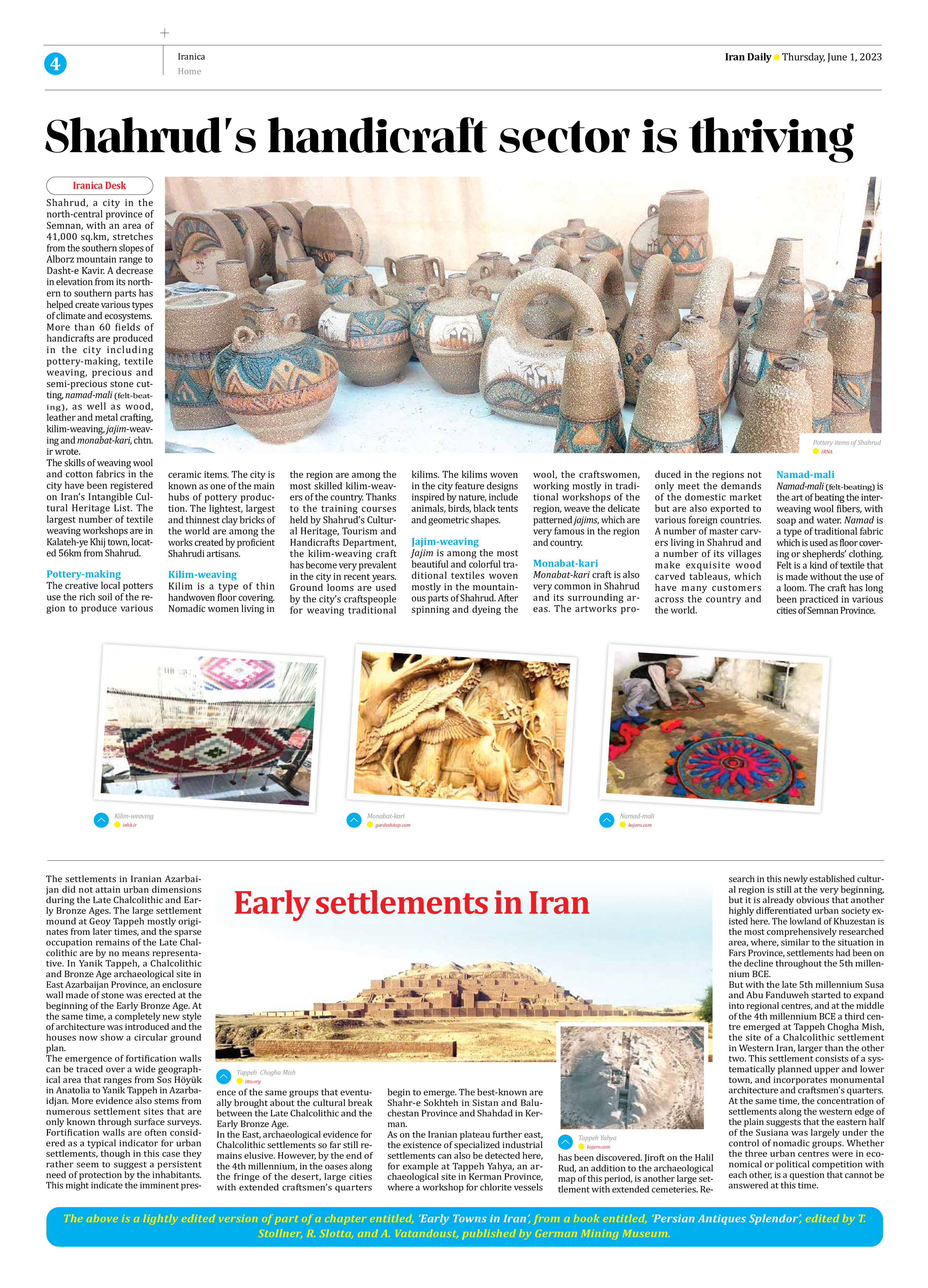
Early settlements in Iran
The settlements in Iranian Azarbaijan did not attain urban dimensions during the Late Chalcolithic and Early Bronze Ages. The large settlement mound at Geoy Tappeh mostly originates from later times, and the sparse occupation remains of the Late Chalcolithic are by no means representative. In Yanik Tappeh, a Chalcolithic and Bronze Age archaeological site in East Azarbaijan Province, an enclosure wall made of stone was erected at the beginning of the Early Bronze Age. At the same time, a completely new style of architecture was introduced and the houses now show a circular ground plan.
The emergence of fortification walls can be traced over a wide geographical area that ranges from Sos Höyük in Anatolia to Yanik Tappeh in Azarbaidjan. More evidence also stems from numerous settlement sites that are only known through surface surveys. Fortification walls are often considered as a typical indicator for urban settlements, though in this case they rather seem to suggest a persistent need of protection by the inhabitants. This might indicate the imminent presence of the same groups that eventually brought about the cultural break between the Late Chalcolithic and the Early Bronze Age.
In the East, archaeological evidence for Chalcolithic settlements so far still remains elusive. However, by the end of the 4th millennium, in the oases along the fringe of the desert, large cities with extended craftsmen’s quarters begin to emerge. The best-known are Shahr-e Sokhteh in Sistan and Baluchestan Province and Shahdad in Kerman.
As on the Iranian plateau further east, the existence of specialized industrial settlements can also be detected here, for example at Tappeh Yahya, an archaeological site in Kerman Province, where a workshop for chlorite vessels has been discovered. Jiroft on the Halil Rud, an addition to the archaeological map of this period, is another large settlement with extended cemeteries. Research in this newly established cultural region is still at the very beginning, but it is already obvious that another highly differentiated urban society existed here. The lowland of Khuzestan is the most comprehensively researched area, where, similar to the situation in Fars Province, settlements had been on the decline throughout the 5th millennium BCE.
But with the late 5th millennium Susa and Abu Fanduweh started to expand into regional centres, and at the middle of the 4th millennium BCE a third centre emerged at Tappeh Chogha Mish, the site of a Chalcolithic settlement in Western Iran, larger than the other two. This settlement consists of a systematically planned upper and lower town, and incorporates monumental architecture and craftsmen’s quarters.
At the same time, the concentration of settlements along the western edge of the plain suggests that the eastern half of the Susiana was largely under the control of nomadic groups. Whether the three urban centres were in economical or political competition with each other, is a question that cannot be answered at this time.
The above is a lightly edited version of part of a chapter entitled, ‘Early Towns in Iran’, from a book entitled, ‘Persian Antiques Splendor’, edited by T. Stollner, R. Slotta, and A. Vatandoust, published by German Mining Museum.







